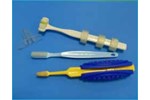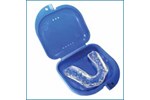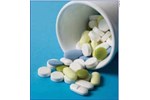
A combination of patients keeping their teeth longer due to more preventative approaches and advances in materials and techniques has led to an increase in incidence of tooth wear. This article describes the incidence, causal agents, lifestyle factors and how tooth wear can be identified and prevent

Behavioural approaches to the delivery of oral healthcare have the potential to improve oral health and reduce social inequality. This article describes the application of health behaviour change principles in a general dental practice. Theory is translated into practice through practical examples o

Dentistry is undergoing a revolution. The ability to see a patient's teeth and jaws in all three dimensions is now talked about in every sphere of dentistry. What is this technology? What can it do?

Major dental conditions of caries and periodontal disease can both be reduced by regular toothbrushing with fluoride toothpaste. The fluoride in toothpaste serves to prevent, control and arrest caries. In this article, Robin Davies discusses the strength of evidence to support the use of fluoride to

Dental nurses have an important role in advising parents on children’s oral health. Hazel Coey outlines the main, evidence-based health messages and suggests how nurses should present them so they are taken on board

Dental sensitivity may be caused by tooth decay, a cracked tooth, worn tooth enamel, worn fillings, and tooth roots that are exposed as a result of aggressive toothbrushing, gum recession and periodontal disease. This article explores prevention and treatment strategies for combating dental sensitiv

Keeping manual instruments sharp benefits both patients and practitioners. Helen Westley describes some manual instruments, explains why they need to be kept sharp and compares systems for sharpening instruments

Radiography help us to accurately diagnose some problems with teeth. Radiography is a valuable tool to allow us to assess the bone that is present. In this article, Martin Pybus discusses the use of 3D radiography and dental imaging, with a particular emphasis on the dental nurse’s role

The dental setting is the first line of defense in early detection of diseases such as mouth cancer and hypertension. Dental professionals have an important role in raising public awareness of health screening.

This article aims to review current aesthetic orthodontic treatment options. The advantages and disadvantages of techniques, such as clear fixed braces, lingual braces and aligners are discussed in turn along with some clinical implications for practice.

Oral health care for special care patients with physical or sensory disability can present a challenge and with an increasing number of older people in the population more people are affected. This article describes why there are risks to oral health and gives some tips in providing effective care

Tooth whitening is a cosmetic procedure that is relatively safe and can improve patients’ quality of life. James MacLaine describes the types of bleaching that can be carried out in the surgery and in the home, and their advantages and disadvantages
























